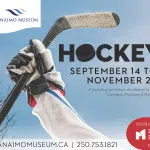
B.C. sawmill explosions report calls for more investigative independence
VANCOUVER — A report reviewing responses by the British Columbia government and WorkSafeBC after two fatal sawmill explosions is calling for a more streamlined investigative process and new ways for workers to report safety concerns.
Two people died and 19 were injured in an explosion at Babine Forest Products in Burns Lake in January 2012. Three months later, two people died and 44 were injured in a similar explosion at Lakeland Mills in Prince George.
Vancouver lawyer Lisa Helps was asked to assess how worker safety recommendations were implemented in the aftermath of the explosions.
In her 54-page report, Helps says all the recommendations made in reports stemming from the incidents have been implemented or partially implemented and the changes have been largely effective and positive. They include two reports commissioned in 2014 as well 2015 reviews by the BC Coroners Service.


